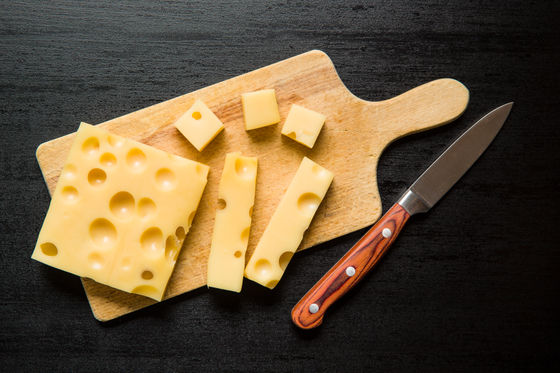Why are there holes in Swiss cheese?

There is a wide variety of cheeses, such as Camembert cheese, Gouda cheese, Cheddar cheese, and blue cheese, but
On the Formation of “Eyes” in Emmental Cheese1-Journal of Dairy Science
https://www.journalofdairyscience.org/article/S0022-0302(17)94362-0/abstract
Mechanism and control of the eye formation in cheese-ScienceDirect
https://www.sciencedirect.com/science/article/abs/pii/S0958694615000631
Mystery of disappearing Swiss cheese holes solved! There's not enough hay, says study
https://www.dairyreporter.com/Article/2015/05/29/Mystery-of-disappearing-Swiss-cheese-holes-solved!-There-s-not-enough-hay-says-study
Why does Swiss cheese have holes?
https://theconversation.com/why-does-swiss-cheese-have-holes-130451
There are thousands of different types of cheese, each with a different color, shape, nutritional value, and flavor. Wikipedia's ' List of cheeses ' page is only this long in the table of contents, but there are many more cheeses in the world.

Among such cheeses, Swiss cheese is well known for its round holes. For over 100 years, such holes in Swiss cheese have been considered 'carbon dioxide-producing.'
Swiss cheese is made by adding several types of bacteria to cow's milk. One of them, `` Propionibacterium freudenrichii subspecies shermanii '', consumes lactic acid secreted from other bacteria, produces acetate and propionic acid, and produces carbon dioxide. A bacterium that has the property of releasing bacteria. This bacterium produces carbon dioxide inside Swiss cheese, but the manufacturing environment is kept at about 21 ° C, so the cheese itself is soft, the released carbon dioxide creates a round opening and escapes outside I will. It has been said that when it is cooled to about 4 ° C in the stage before completion, the vacant holes remain as “eyes”. This theory is based on a

Meanwhile, according to

To test the theory, Agroscope used emmental, a type of typical Swiss cheese, using milk without hay and milk mixed with small pieces of hay of various weights from 0.0625 mg to 4 mg. I did an experiment to make cheese. The results confirmed that there was a statistically significant correlation between the hole in the finished Emmental cheese and the weight of the hay that was mixed.
Agroscope concluded that `` this study shows that hand-drawn milk is still contaminated with hay through microfiltration membranes, and that small pieces of hay create holes in Swiss cheese. '' You.
Related Posts:
in Food, Posted by darkhorse_log







